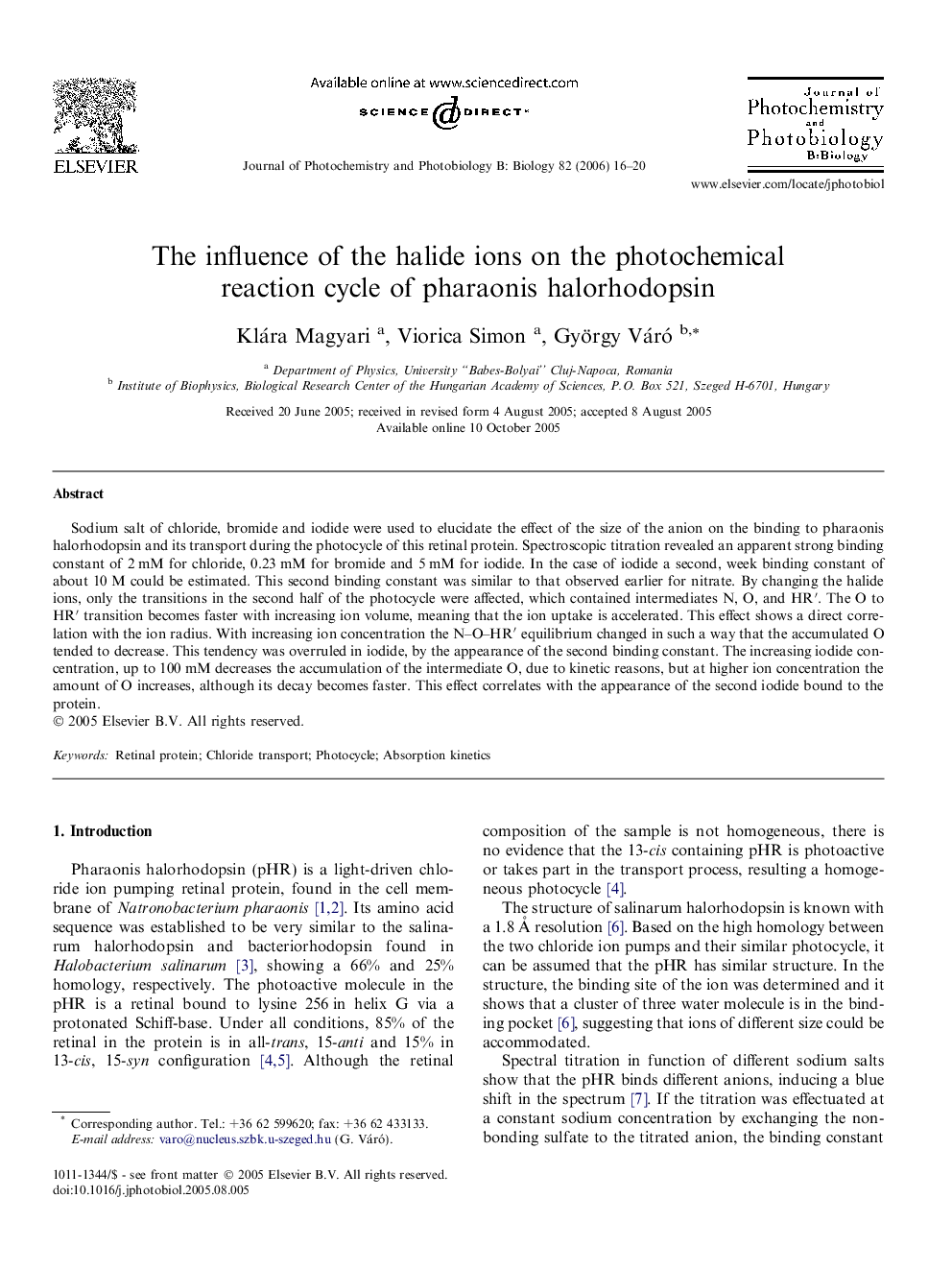| Article ID | Journal | Published Year | Pages | File Type |
|---|---|---|---|---|
| 30798 | Journal of Photochemistry and Photobiology B: Biology | 2006 | 5 Pages |
Sodium salt of chloride, bromide and iodide were used to elucidate the effect of the size of the anion on the binding to pharaonis halorhodopsin and its transport during the photocycle of this retinal protein. Spectroscopic titration revealed an apparent strong binding constant of 2 mM for chloride, 0.23 mM for bromide and 5 mM for iodide. In the case of iodide a second, week binding constant of about 10 M could be estimated. This second binding constant was similar to that observed earlier for nitrate. By changing the halide ions, only the transitions in the second half of the photocycle were affected, which contained intermediates N, O, and HR′. The O to HR′ transition becomes faster with increasing ion volume, meaning that the ion uptake is accelerated. This effect shows a direct correlation with the ion radius. With increasing ion concentration the N–O–HR′ equilibrium changed in such a way that the accumulated O tended to decrease. This tendency was overruled in iodide, by the appearance of the second binding constant. The increasing iodide concentration, up to 100 mM decreases the accumulation of the intermediate O, due to kinetic reasons, but at higher ion concentration the amount of O increases, although its decay becomes faster. This effect correlates with the appearance of the second iodide bound to the protein.
